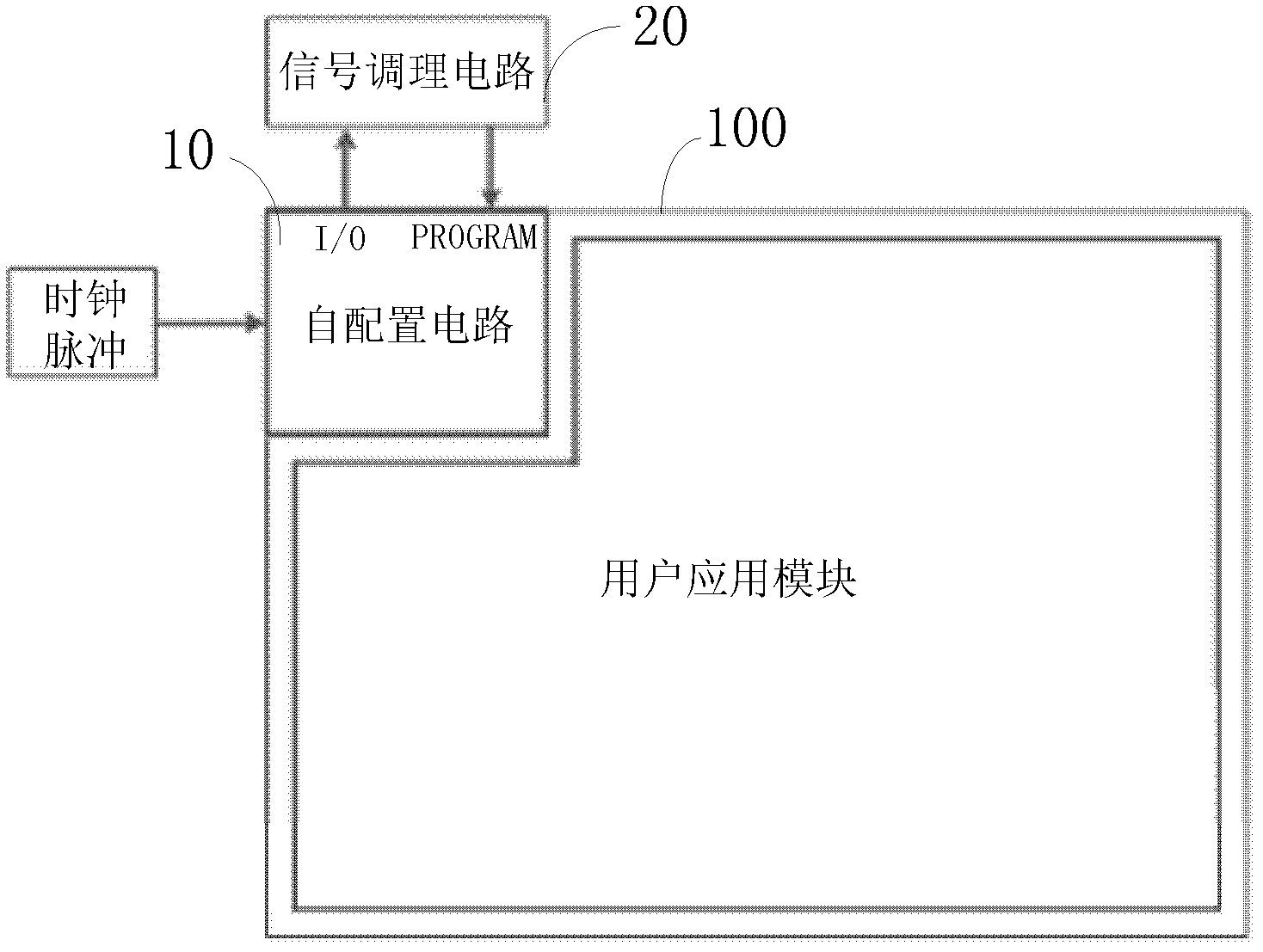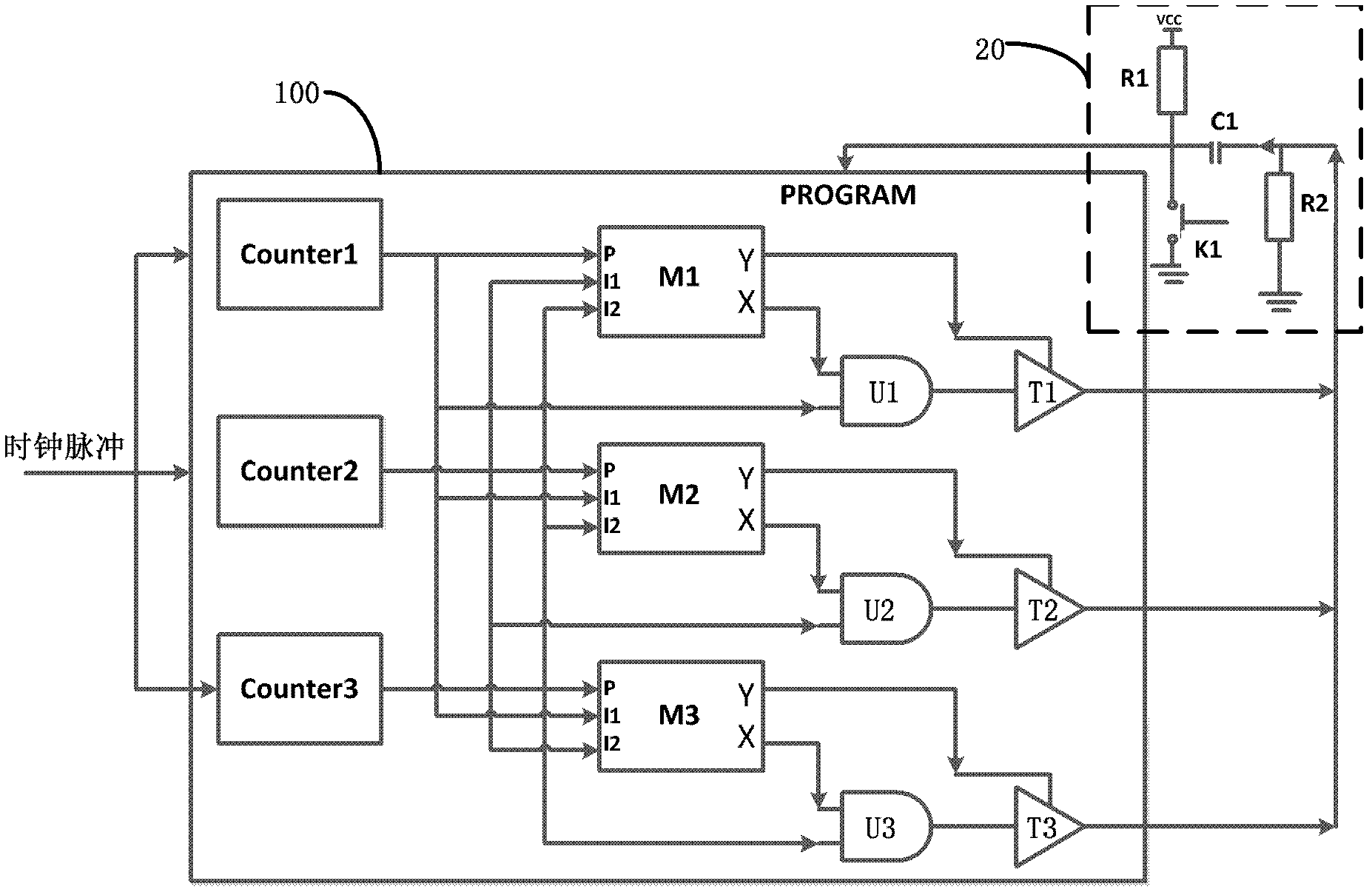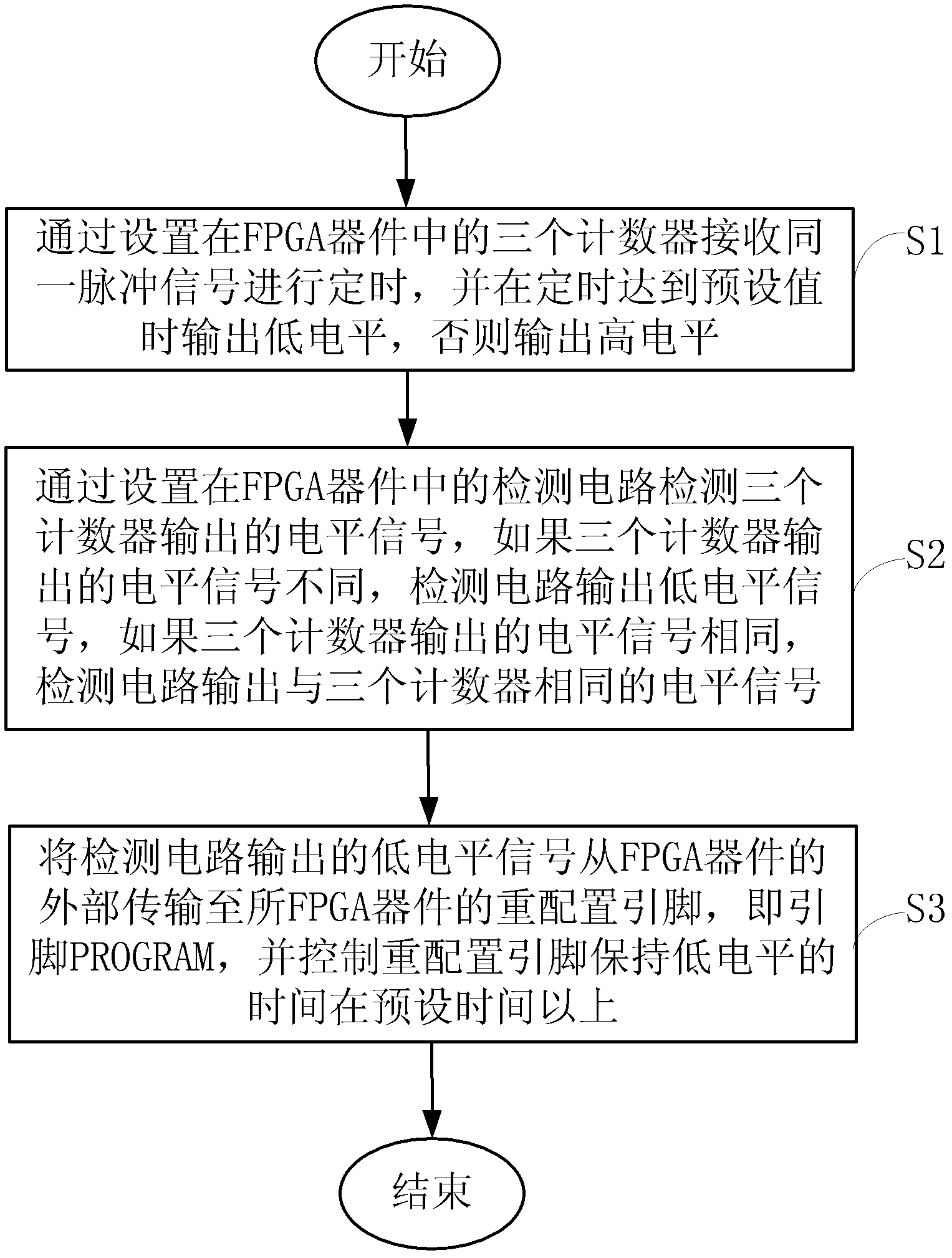Field programmable gate array device dead-weight configuration device and method
A technology for configuring devices and gate arrays, which is applied to general-purpose stored program computers and architectures with a single central processing unit, etc., can solve problems such as increased weight and power consumption, reduced reliability of hardware design, and increased design complexity, etc. The effect of simple wiring and structure
- Summary
- Abstract
- Description
- Claims
- Application Information
AI Technical Summary
Problems solved by technology
Method used
Image
Examples
Embodiment Construction
[0021] Embodiments of the present invention will be described below with reference to the drawings. Elements and features described in one drawing or one embodiment of the present invention may be combined with elements and features shown in one or more other drawings or embodiments. It should be noted that representation and description of components and processes that are not related to the present invention and known to those of ordinary skill in the art are omitted from the drawings and descriptions for the purpose of clarity.
[0022] For SRAM-type FPGA devices, a reconfiguration pin is generally provided, and the FPGA device can enter the reconfiguration stage by applying a low-level pulse with a preset width to the pin. The invention provides an FPGA device self-weight configuration device. In the device of the present invention, the low-level pulse of the preset width is provided by the FPGA device to be configured, specifically, a self-configuration circuit is set in...
PUM
 Login to View More
Login to View More Abstract
Description
Claims
Application Information
 Login to View More
Login to View More - R&D
- Intellectual Property
- Life Sciences
- Materials
- Tech Scout
- Unparalleled Data Quality
- Higher Quality Content
- 60% Fewer Hallucinations
Browse by: Latest US Patents, China's latest patents, Technical Efficacy Thesaurus, Application Domain, Technology Topic, Popular Technical Reports.
© 2025 PatSnap. All rights reserved.Legal|Privacy policy|Modern Slavery Act Transparency Statement|Sitemap|About US| Contact US: help@patsnap.com



